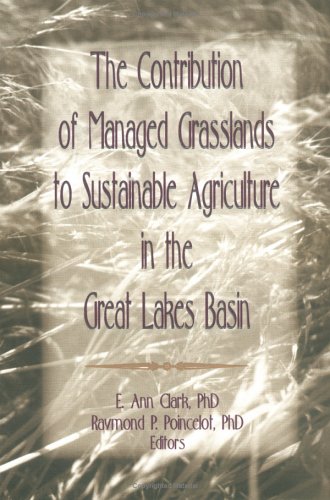The Contribution of Managed Grasslands to Sustainable Agriculture in the Great Lakes Basin explores the many benefits of perennial forages on contemporary farming and shows how pasture, or "grass," is the central, sustaining element in whole farm resource management. The book challenges the narrow view of the 1950s that grass could be replaced with resource-intensive specialized technologies for crop and livestock production and presents a more holistic, less capital- and resource-intensive approach to livestock management. Readers increase their awareness of the environmental ramifications of continuous annual cropping in support of high-density confinement feeding systems as they focus their attention on grass-based livestock farming as a more sustainable and environmentally friendly alternative.The Contribution of Managed Grasslands to Sustainable Agriculture in the Great Lakes Basin presents helpful information to agriculturalists working in the fields of crop and animal sciences, resource management, agronomy, agricultural economics, and sustainable agriculture. The book is equally valuable to environmentalists interested in agroecology, biotic diversity, and holistic ecology. Specific topics readers explore include:
- the multiple roles of managed grasslands, both as a source of ruminant nutrition and as a complement to arable cropping
- the environmental and economic forces which have altered the prominence of managed grasslands in North America
- soil, nutrient, and water conservation with managed grasslands
- a basic introduction to plant/animal systems
- an historical perspective on pasture investigation in OntarioThe Contribution of Managed Grasslands to Sustainable Agriculture in the Great Lakes Basin bridges the gap between livestock agriculturists and environmentalists. After all, perennial forages are an essential and irreplaceable tool for soil, water, and air resource management, and livestock agriculture (especially ruminant agriculture) provides the economic rationale for growing these forages. Equally important is the book's approach to specific obstacles, such as the lack of direct information from predecessors working in the same field and unsupportive funding sources and policies based on the archaic notion that pasture is an outdated technology.Overall, this book underscores the critical relevance of managed grasslands to the sustainability of agriculture as a whole and serves as a guide to the types of grassland research and to the rationale for changes of the focus of the research over the decades. Especially important for researchers in this field, The Contribution of Managed Grasslands to Sustainable Agriculture in the Great Lakes Basin helps identify useful background information and suggests promising new directions for future research.
- ISBN10 1560220562
- ISBN13 9781560220565
- Publish Date 17 January 1997
- Publish Status Out of Print
- Out of Print 20 January 2022
- Publish Country GB
- Publisher Taylor & Francis Ltd
- Imprint Food Products Press,U.S.
- Format Hardcover
- Pages 189
- Language English
